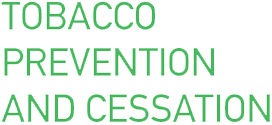Home
Issues
Aim & Scope
Editorial Board
Open Access
Indexing
Why publish with us
Contact us
Instructions to Authors (PDF)
Manuscript Types
Manuscript Formatting
How to submit
Special publications & Reprints
Preprints
Authorship & COI
Principles of Transparency Checklist
Publication Ethics and Publication Malpractice Statement
CrossMark
Data Policies
Supporting Diversity
The challenges in the deployment of a legal ban on tobacco advertisement on the example of Poland
1
Maria Skłodowska-Curie National Research Institute of Oncology, Warsaw, Poland
2
Cancer Epidemiology and Primary Prevention Department,
Maria Skłodowska-Curie National Research Institute of Oncology, Warsaw, Poland
3
Food, Technology and Nutrition, Faculty of Human Nutrition Sciences, Department of Food Market and Consumer Research, Warsaw University of Life Sciences, Warsaw, Poland
4
Department of Social Medicine and Public Health, Medical University of Warsaw, Warsaw, Poland
5
World Health Organization, Country Office for Poland, Warsaw, Poland
6
Tobacco Control Research Group, Epidemiology, Public Health, Cancer Prevention and Palliative Care Program (Epibell), Biomedical Research Institute of de Bellvitge (IDIBELL), Barcelona, Spain
7
Consortium of Centers for Biomedical Research on Respiratory Diseases (CIBERES), Madrid, Spain
8
Center for Epidemiology and Health Policies, Clínica Alemana School of Medicine, Universidad del Desarrollo, Santiago, Chile
Publication date: 2021-12-10
Tob. Prev. Cessation 2021;7(Supplement):59
ABSTRACT
Background:
In order to counteract addiction to the use of tobacco and related products and protect public health against its consequences, Polish law prohibits the advertisement and promotion of tobacco products, electronic cigarettes, refill containers, and props, as well as objects presenting these products, including at points of sale (POS). Objectives: To identify if the law banning the advertisement and promotion of tobacco and related products d in POS is followed near the school settings.
Methods:
A cross-sectional study based on an author-delivered questionnaire was carried out in 3 districts of Warsaw, Poland, in the area of high schools. The study focused on the availability and visibility of objects that may suggest advertising and promotion of tobacco products and electronic cigarettes.
Results:
The analysis concerned 123 POS of which 112 were available to observe. The outdoor tobacco products advertisement was not found in the study, however, some form of advertisement or promotion inside the stores was observed in 83% of visited POS, and in 79.5% the law was not respected. The proportion of open POS that advertised indoors cigarettes, HTPs, or e-cigarettes was 22%, 20%, and 45% of which 36%, 50%, and 67.3% advertised flavored cigarettes, HTPs, or e-cigarettes. The most frequent form of tobacco advertisement in POS was branded objects such as change and counter mats visible in 6 out of 10 POS against binding prohibition.
Conclusions:
According to the proven high exposure of Polish youth on tobacco advertisement and promotion in POS, to decrease tobacco consumption in this vulnerable group, to increasing control over the enforcement of law in terms of advertisement and exposure of tobacco products should be considered.
In order to counteract addiction to the use of tobacco and related products and protect public health against its consequences, Polish law prohibits the advertisement and promotion of tobacco products, electronic cigarettes, refill containers, and props, as well as objects presenting these products, including at points of sale (POS). Objectives: To identify if the law banning the advertisement and promotion of tobacco and related products d in POS is followed near the school settings.
Methods:
A cross-sectional study based on an author-delivered questionnaire was carried out in 3 districts of Warsaw, Poland, in the area of high schools. The study focused on the availability and visibility of objects that may suggest advertising and promotion of tobacco products and electronic cigarettes.
Results:
The analysis concerned 123 POS of which 112 were available to observe. The outdoor tobacco products advertisement was not found in the study, however, some form of advertisement or promotion inside the stores was observed in 83% of visited POS, and in 79.5% the law was not respected. The proportion of open POS that advertised indoors cigarettes, HTPs, or e-cigarettes was 22%, 20%, and 45% of which 36%, 50%, and 67.3% advertised flavored cigarettes, HTPs, or e-cigarettes. The most frequent form of tobacco advertisement in POS was branded objects such as change and counter mats visible in 6 out of 10 POS against binding prohibition.
Conclusions:
According to the proven high exposure of Polish youth on tobacco advertisement and promotion in POS, to decrease tobacco consumption in this vulnerable group, to increasing control over the enforcement of law in terms of advertisement and exposure of tobacco products should be considered.
CONFLICTS OF INTEREST
No Conflicts of Interest were reported.
We process personal data collected when visiting the website. The function of obtaining information about users and their behavior is carried out by voluntarily entered information in forms and saving cookies in end devices. Data, including cookies, are used to provide services, improve the user experience and to analyze the traffic in accordance with the Privacy policy. Data are also collected and processed by Google Analytics tool (more).
You can change cookies settings in your browser. Restricted use of cookies in the browser configuration may affect some functionalities of the website.
You can change cookies settings in your browser. Restricted use of cookies in the browser configuration may affect some functionalities of the website.

